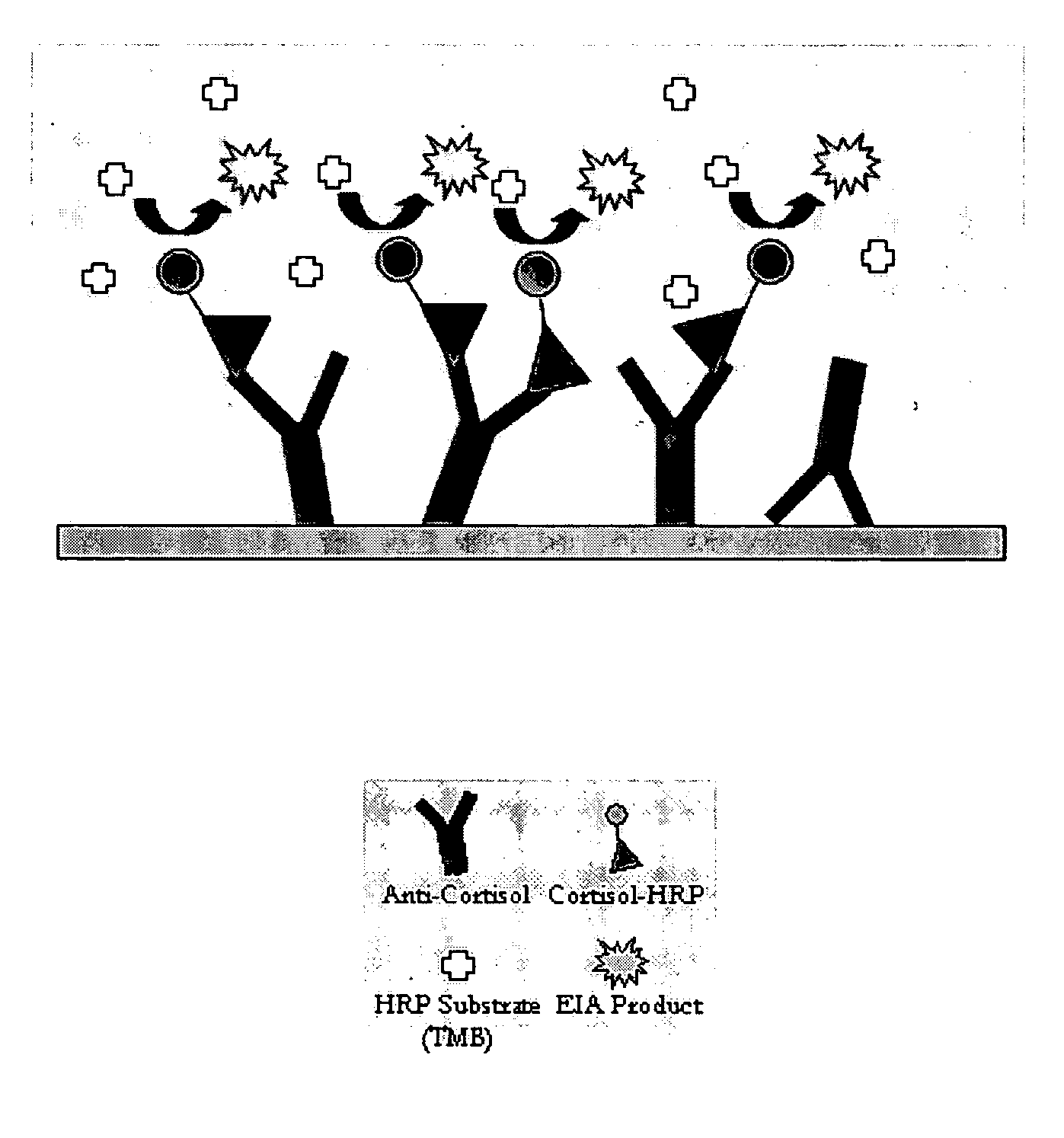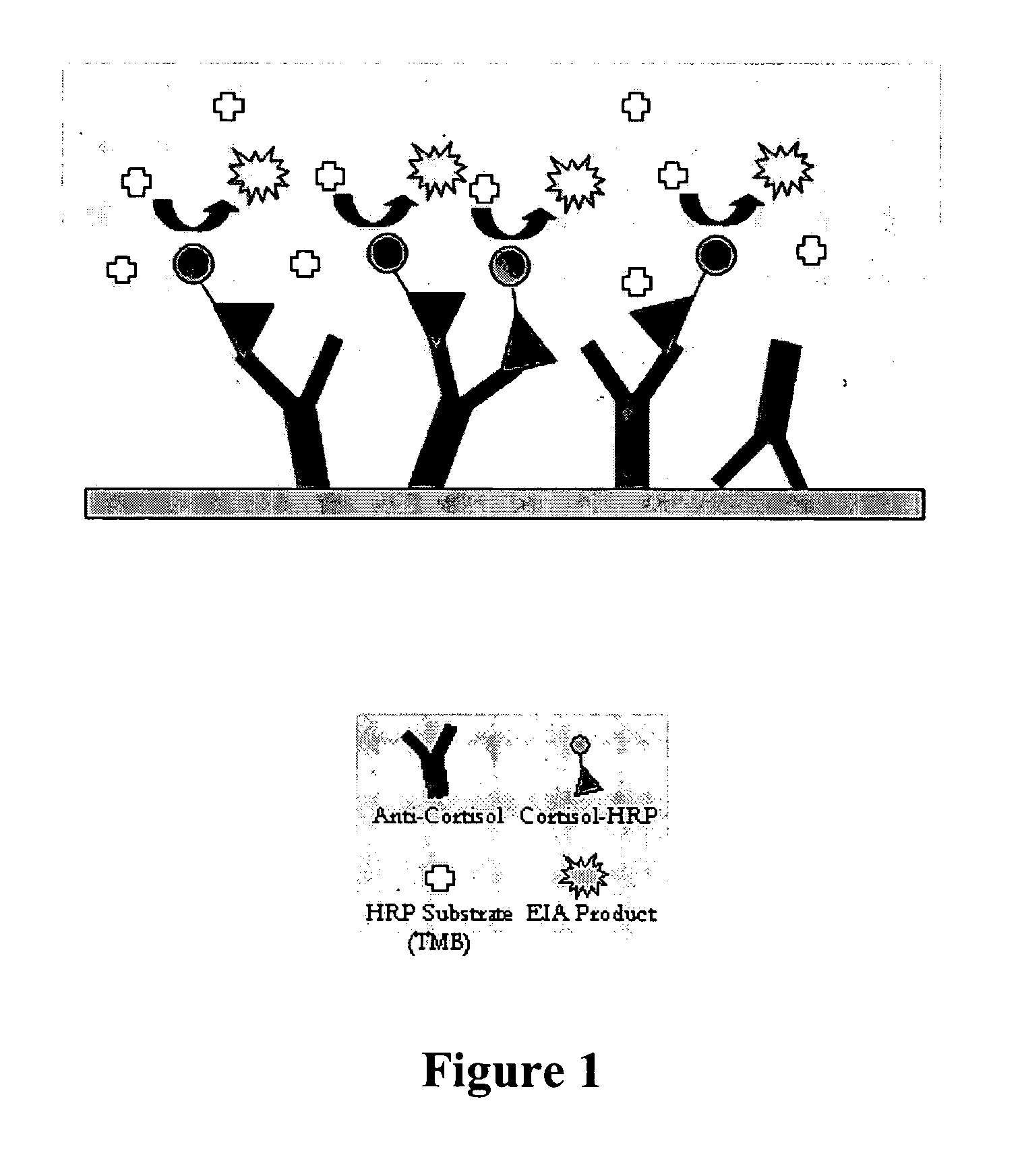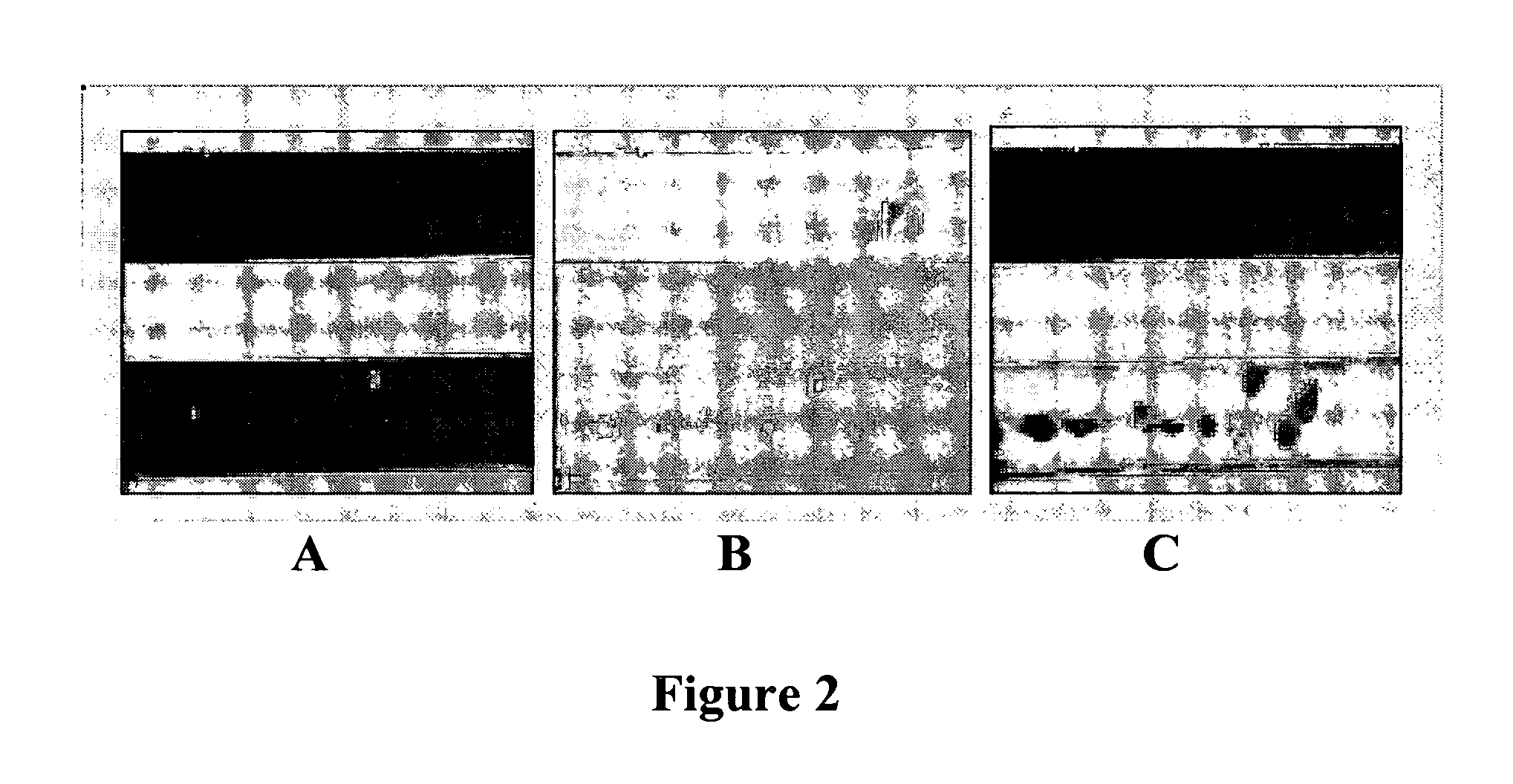Signal amplification method for surface plasmon resonance-based chemical detection
a surface plasmon and chemical detection technology, applied in the field of microfluidic devices and flow-based methods, can solve the problems of limiting the changes in refractive index and limiting the speed and sensitivity of spr detection, and achieve the effect of high throughput screening
- Summary
- Abstract
- Description
- Claims
- Application Information
AI Technical Summary
Benefits of technology
Problems solved by technology
Method used
Image
Examples
example 1
[0044]In this non-limiting example an anti-cortisol monoclonal antibody is utilized as an analyte capture agent and immobilized on a gold coated glass SPR sensor surface and a horseradish peroxidase labeled cortisol is incubated with the immobilized antibody. Subsequently the enzyme substrate tetramethyl-benzidine (TMB) is added and the reaction is allowed to proceed to form an insoluble blue product. The assay demonstrates that the precipitate formed by the enzymatic reaction adsorbs to the SPR sensor surface amplifying the detection signal.
[0045]Briefly, the gold coating of a microscope slide is cleaned in a base / peroxide wash. In such a method, in a clean, flat-bottom glass dish, hydrogen peroxide, ammonium hydroxide, and double distilled water (ddH2O) were mixed in a 1:1:5 volumetric ratio. The solution was heated to about 65° C. and covered with a watch glass to minimize evaporative loss. The gold-coated glass slide was immersed in the heated solution and soaked for approximate...
example 2
[0054]The present example further illustrates the utility of the enzyme precipitation and signal amplification methods of the invention for quantification of low concentrations of analytes under microfluidic laminar flow conditions. In general, these results further demonstrates the utility of the current methods, illustrating that the rapid and significant amplification of the SPR signal remains robust in flow-based assays.
[0055]The overall experimental method, including reagents and detection technique, is substantially similar to that described in Example 1 (see above). A multi-channel microfluidic flow cell constructed from laminate sheets of Mylar™ and adhesive and a gold-coated glass slide was used in these experiments. In a first step, anti-cortisol antibodies, utilized as exemplary analyte capture agent, were physically adsorbed to the gold sensor surface by incubating a 0.1 mg / ml solution in the microchannels for 30 minutes. After rinsing thoroughly with phosphate buffered ...
PUM
| Property | Measurement | Unit |
|---|---|---|
| thickness | aaaaa | aaaaa |
| thick | aaaaa | aaaaa |
| reflectivity | aaaaa | aaaaa |
Abstract
Description
Claims
Application Information
 Login to View More
Login to View More - R&D
- Intellectual Property
- Life Sciences
- Materials
- Tech Scout
- Unparalleled Data Quality
- Higher Quality Content
- 60% Fewer Hallucinations
Browse by: Latest US Patents, China's latest patents, Technical Efficacy Thesaurus, Application Domain, Technology Topic, Popular Technical Reports.
© 2025 PatSnap. All rights reserved.Legal|Privacy policy|Modern Slavery Act Transparency Statement|Sitemap|About US| Contact US: help@patsnap.com



